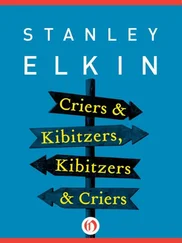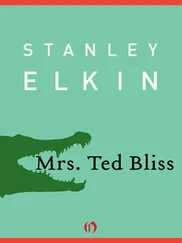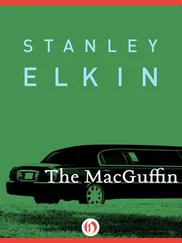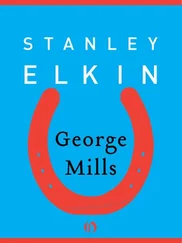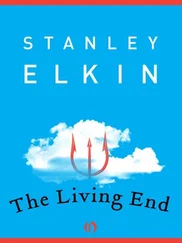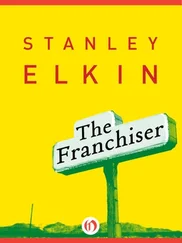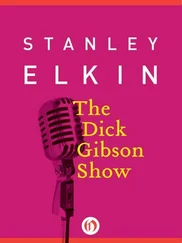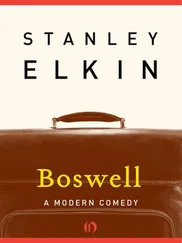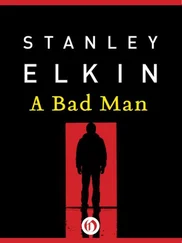Stanley Elkin
The Rabbi of Lud
But for Bill Whitehead too.
The author wishes to thank Rabbi James S. Diamond and Rabbi Devorah Jacobson of the Hillel Foundation for their generous assistance whenever he asked for it. He would also like to thank Kaye Norton, Leanna Boysko and Millie Hoerner, and all the folks in the coffee room.
THEY SAY IT’S FLAT as sea level and, so far as the eye can tell, it sure looks like it — some great, blunt stub of the earth, level as a table, as if the Creator had meant to mimic in dirt and pure planes of real estate the dark ascensions and black declinations of space, all His monotonous deep celestials. Heaven on earth, so to speak. Or, to hear me tell it — I’m Jerry Goldkorn, the Rabbi of Lud — under earth, either.
Well, this part of Jersey’s not known for its mountains. The Jersey flats, they call it, that stretch between Hoboken and Newark, the upper reaches of the Garden State Parkway and the Hudson River, and though it’s built up now, condos and malls, industrial parks and factory outlet stores, and the skyscrapers of New York in the middle distance like another country altogether, it must once have looked like scorched earth or the kind of terrain where two opposing civilizations came to grips, just the sort of undistinguished, insignificant but bloodied parcel where the battle park goes or historic field where important papers were signed.
Which doesn’t, when it comes right down, preclude. Ain’t it bloodied? That bunch of our dead, I mean. And at least legal if not out-and-out historical? I mean all those contracts, notarized papers, the official documents, certificates and reciprocal pledges.
Legend has it — this would have been sometime in the tenderloin of the seventeenth century, pre-Colonial times, New Amsterdam days — that some founding Jew lost his wife and all his male and female children to one of those cyclical miniplagues that used to hit the New World from time to time. (Listen, usually the missionaries and imperialists take the rap, the troops and camp followers good for the fall. But pox is a two-way street. Disease is just as often a tradeoff. I’ve got nothing against the red man per se, but all you hear about is the white guy’s syphilis and TB, smallpox on the blankets, typhoid in the orange juice, and other assorted germs of the paleface. Let’s be frank here. The Indians dished it out pretty good themselves. There was your maize, there were your bark and berry poisonings. There was your bad peace pipe, your war-paint cosmetics and other fatal allergies. Death by the digestive and the killer contact rashes.) Forgive and forget, I say. Live and let live, why not? But the fact remains, the van Feldmaans and van Gildbergs, or whoever, came to grief along with other of their Dutch neighbors. So, sooner or later, the need arose. Say what you will, pioneers are generally rotten city planners. Many are the reasons for this, but in the case of the Jewish peoples, living on the leading edge of the Diaspora, there’s usually so much else on their minds. They have to pick out a ghetto, they have to put a reliable minyan together. In a radically new environment like New Amsterdam must have been, they probably had to do a whole classification number on the flora and fauna, checking the trayf factors in the deer and the turkeys, in the catfish and tortoises, in the newfangled salads, the pumpkin pies and cranberry candies. (I’m no expert in the matter — I don’t say I shouldn’t be, I say I’m not — but it’s a pretty good bet that those founding Jews were probably a very choosy chosen people, more Orthodox than anything we see today, if not hounded then at least closely questioned, at least scrutinized, and maybe hounded, even by their old Old World coreligionists, who would have looked on them, even in those old gabardine times, as a separate branch or sect or even cult, or otherwise why would they have bothered to make the trip in the first place? So who knows what must have been on their minds or what they would have made of all the what-have-you of the buckskin life?)
Anyway, when the sickness — we’ll call it New World fever — broke out and made its way under the pales and pickets and over the posts of their little Jewish stockade, and the Angel of Death took off with most of his family, the founding Jew guy was probably caught short. Not only didn’t he have a family plot, there wasn’t a consecrated cemetery on all Manhattan Island. What did he see? His gentile neighbors taking their particular dead off in canoes to Queens. (Because the New Amsterdam Jews were only a small contingent and were not as prepared as their Christian brothers and sisters who, outnumbering them probably a hundredfold in life, quite naturally were way ahead of them in death, too, and were already in possession of a place to bury their dead.)
Which is when, it’s said, someone — the name is lost to history — crossed the Hudson and discovered Lud — the vast, once and future compound of departed Jews to come. Maybe it was the treeless soil, maybe just the brown, dead look of the place, or it could be he saw a correspondence between the blank, fresh page of that open plain and the charged, historic enterprise of making something out of what wasn’t just a new country this time but a new continent too.
Though the latter, I’m the first to admit, is probably just the rabbi in me talking, the opportune poetry of my sacramental, laureate occasions. I’m leaving a couple of things out here anyway — the mounds and the grief. Hey, I’m no expert. Maybe I’m thinking of a different tribe altogether. Maybe the Mounds Indians never even came East. But the subject is still savages, people buried upright or sitting in the earth like schoolchildren at their lessons, in mass graves, or left out to dry like laundry on platforms in trees. But, whatever, interfacing, impacting on a people who came from Holland by way of Poland out of Prussia and from Prussia by way of Spain out of North Africa. The whole Jew thing a wandering minstrelsy. Assimilated a dozen times before they were chewed up and spit out, covered in cultures like a snowball rolling downhill, fattening. Except that these couldn’t even have been Jews as we know them, a cult, a clan, a sect, a faction, their beliefs — I’m a rabbi, I should know these things but here I’m speculating — on the lintels of their log cabins and on their gates, and as frontlets in their beards, say, and even their skullcaps — no disrespect — improvised, improbable as the headdress of the Indians themselves. But, whatever, by this time so culture-shocked out, and outraged, too, that they — he, the founder Jew, or maybe the lookout, shotgun-riding, scout-emissary-agent Jew for him — felt strong enough about it to shove off in the old birchbark and out into the wide and whelming Hudson — this would have been after the winter thaw, during the spring plagues — not just to seek out Lud but to get their dead as far away from the redskin dead as possible. And from the Dutchmen dead too, all those borough-of-Queens-grounded Katrinkas and Jans, Wilhelminas and Hauke Pjeters, as if they needed to put not just one but two rivers between their different theologies, almost, I mean, as though life is one thing and it’s all right to walk around on the surface of the earth together without losing any sleep over it or doing any lasting damage, but death, which lasts longer, and isn’t just any only make-do, temporary arrangement, is another thing entirely, and you have to do whatever you have to do in order to defend your remains against their remains.
On the grief side the ground is less shaky.
Читать дальше



